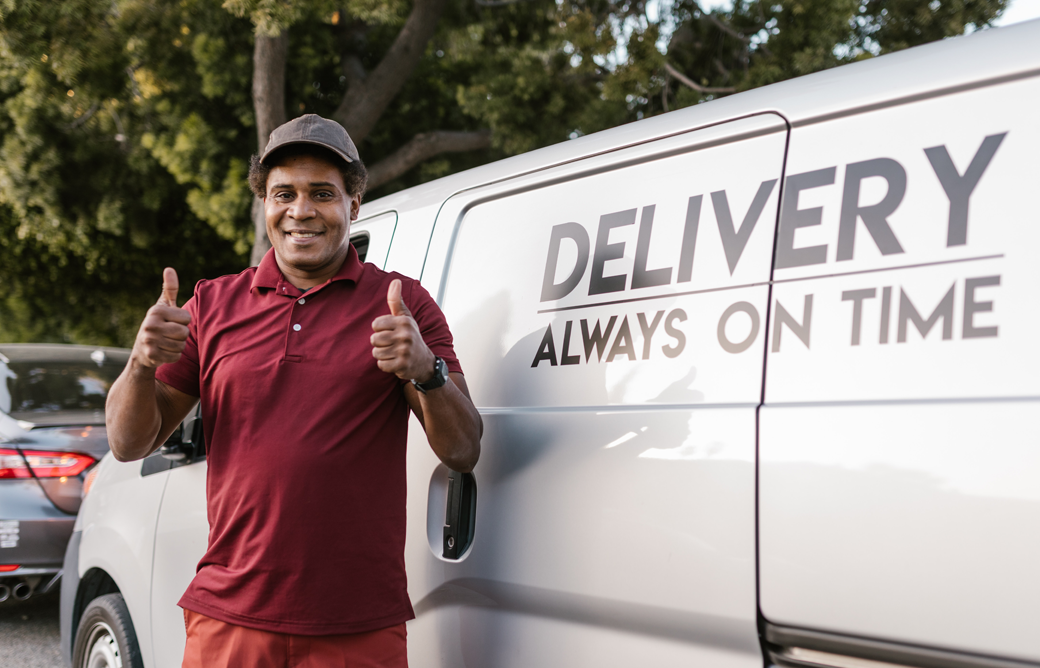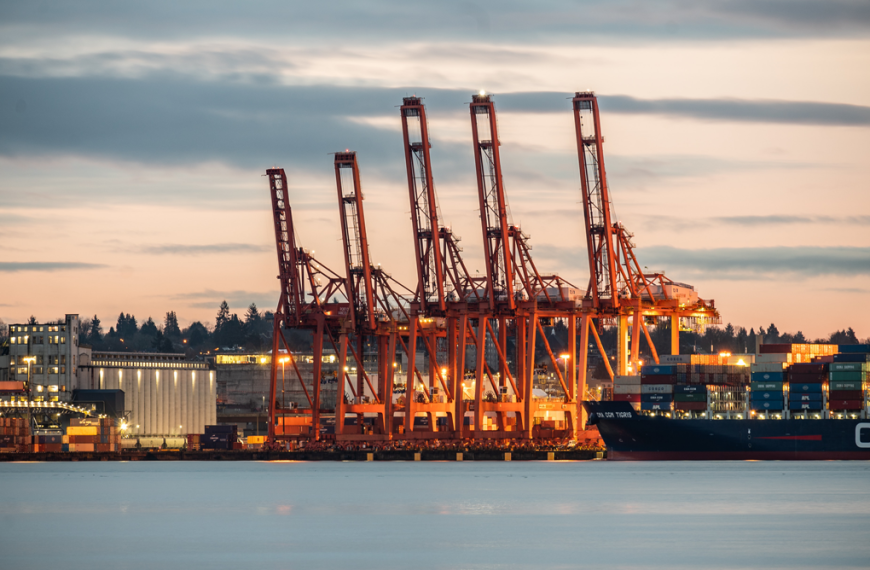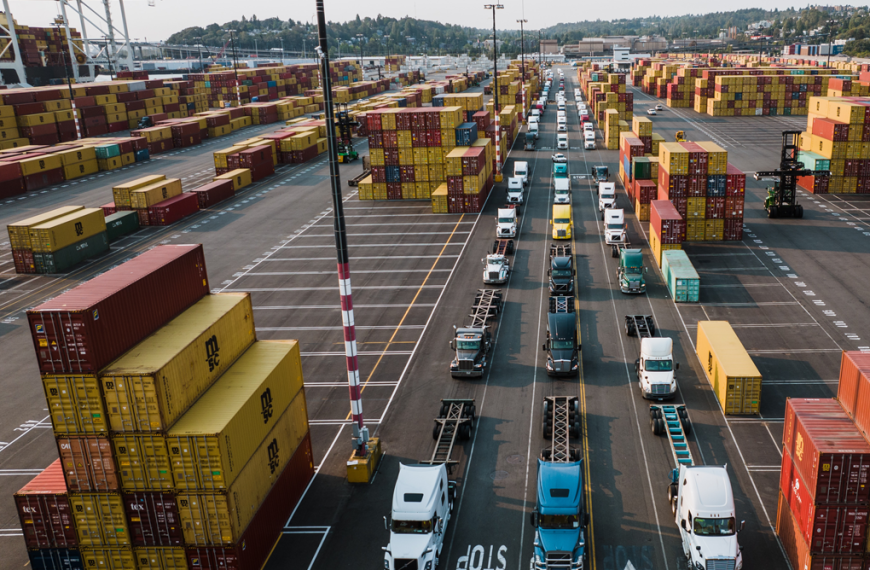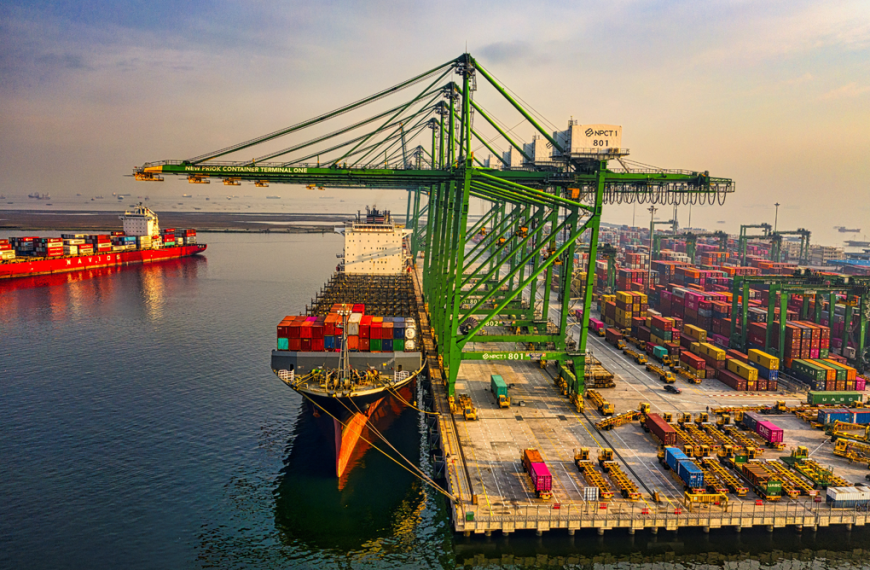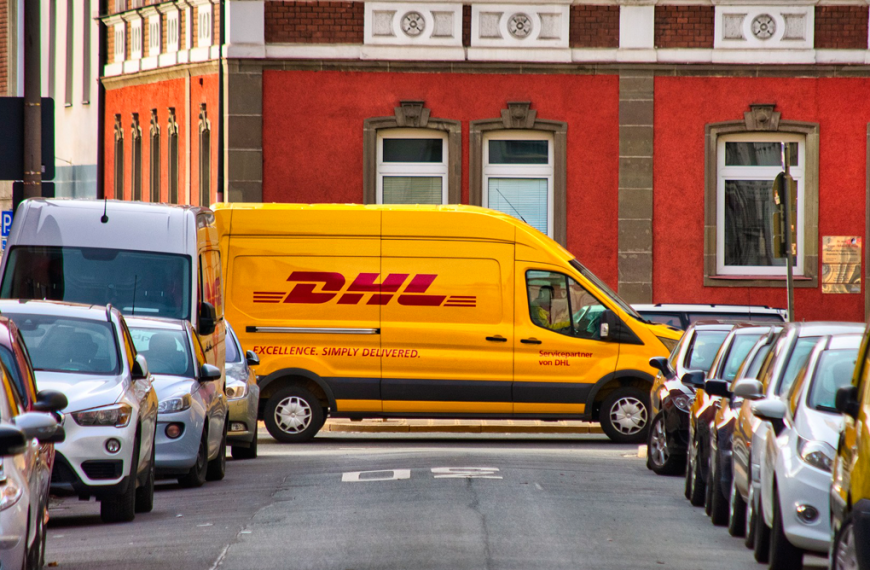In the ever-evolving world of freight logistics, one aspect has emerged as a catalyst for success: last-mile delivery. This final leg of the transportation process holds immense potential for businesses operating in the freight industry. Let’s embark on a journey to explore the revolutionary impact of last-mile delivery and how it has become a game-changer in the realm of freight transportation.
- Transforming Last-Mile Delivery
- Customer Delight: The Ultimate Objective of Last-Mile Delivery
- Optimization: Key to Unlocking Last-Mile Success
- Collaboration: The Power of Partnerships
- Sustainable Solutions: Paving the Way for the Future
- Adapting to Changing Demands: The Future of Last-Mile Delivery
- Understanding the Competitive Landscape: Unlocking Success in Last-Mile Delivery for Freight Logistics
- Embrace the Competitive Challenge: A Catalyst for Innovation
- Know Your Rivals: Research and Analysis
- Unveiling Customer Preferences: A Competitive Advantage
- Innovation: The Key to Differentiation
- Collaborate for Success: Strategic Partnerships
- Continuous Improvement: A Competitive Mindset
- Adapt and Lead: Shaping the Competitive Landscape
- Key Factors for Success in Last-Mile Delivery for Freight Logistics
- 1. Optimal Route Planning: Efficiency at its Best
- 2. Real-Time Tracking and Communication: Transparency and Trust
- 3. Reliable Partner Network: Collaboration for Success
- 4. Efficient Inventory Management: The Right Products, at the Right Time
- 5. Skilled Workforce: The Human Touch
- 6. Adaptability to Changing Trends: Embrace Innovation
- 7. Data-Driven Insights: Unlocking Performance Optimization
- Innovations Driving Last-Mile Efficiency in Freight Logistics
- 1. Autonomous Vehicles: A Road to Efficiency
- 2. Drone Delivery: Taking to the Skies
- 3. Delivery Robots: On the Ground, On Time
- 4. Internet of Things (IoT): Connecting the Delivery Ecosystem
- 5. Artificial Intelligence (AI): Smarter Decision-Making
- 6. Blockchain Technology: Securing and Streamlining Operations
- 7. Augmented Reality (AR): Enhancing Customer Experience
- Overcoming Last-Mile Challenges in Freight Logistics
- 1. Addressing Traffic Congestion: Navigating Through Gridlocks
- 2. Managing Time-Sensitive Deliveries: Meeting Strict Deadlines
- 3. Handling Package Theft: Securing Deliveries
- 4. Optimizing Delivery Density: Maximizing Efficiency
- 5. Enhancing Customer Communication: Ensuring Transparency
- 6. Adapting to Customer Preferences: Personalizing the Experience
- 7. Leveraging Data Analytics: Unlocking Insights for Improvement
- Customer Satisfaction and Loyalty in Last-Mile Delivery
- 1. Delivering On-Time, Every Time: The Power of Reliability
- 2. Seamless Communication: Keeping Customers in the Loop
- 3. Personalized Delivery Experiences: Catering to Individual Needs
- 4. Exceptional Service: Going Above and Beyond
- 5. Proactive Issue Resolution: Turning Challenges into Opportunities
- 6. Gathering and Acting on Feedback: Continuous Improvement
- 7. Building Trust Through Transparency: Honesty and Integrity
- Future Trends and Opportunities in Last-Mile Delivery
- 1. Embracing Automation: The Rise of Delivery Drones and Autonomous Vehicles
- 2. Sustainable Solutions: Green Initiatives and Eco-Friendly Practices
- 3. Data-Driven Insights: Leveraging Analytics for Optimization
- 4. Enhanced Customer Experience: Personalization and Convenience
- 5. Collaboration and Partnerships: Strengthening the Ecosystem
- 6. Delivery Experience Innovation: Augmented Reality and Contactless Solutions
Transforming Last-Mile Delivery
The last-mile delivery revolution is reshaping the landscape of freight logistics. Through cutting-edge technologies and innovative solutions, businesses are revolutionizing the way goods are transported and delivered. From autonomous delivery drones and robotic systems to smart route optimization algorithms, the possibilities are endless.
The key lies in embracing these advancements to streamline operations, enhance efficiency, and surpass customer expectations.
Customer Delight: The Ultimate Objective of Last-Mile Delivery
At the heart of the last-mile delivery revolution lies the pursuit of customer delight. This crucial stage of the transportation process serves as the bridge between businesses and their customers. By ensuring seamless and exceptional delivery experiences, companies can establish customer loyalty and gain a competitive edge.
From convenient delivery time slots and real-time package tracking to personalized communication, every interaction is an opportunity to exceed expectations and foster long-term customer relationships.
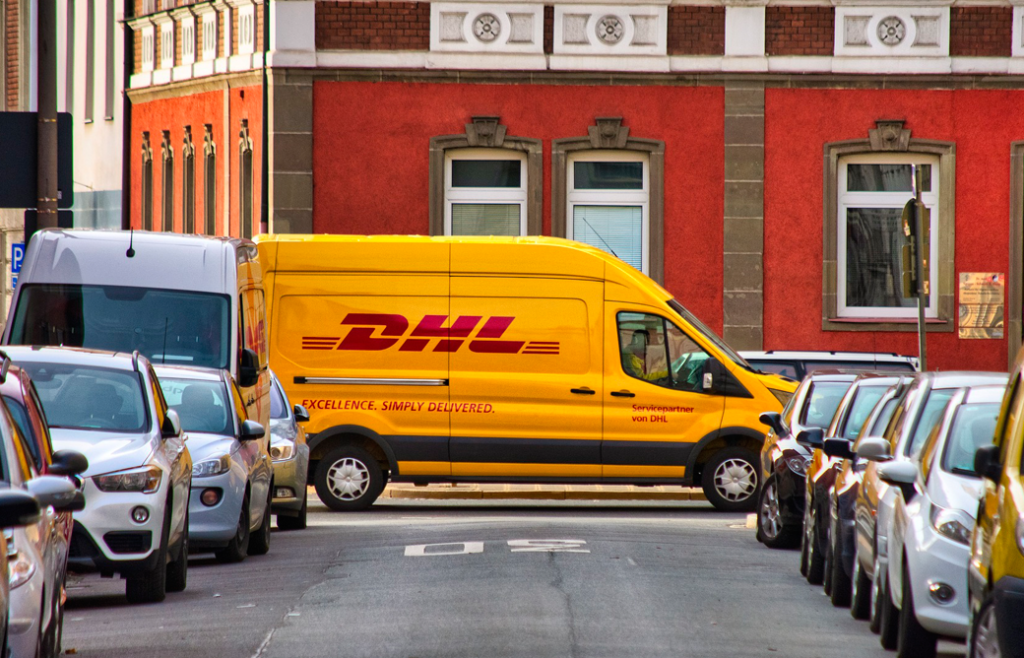
Optimization: Key to Unlocking Last-Mile Success
Efficient last-mile delivery is the cornerstone of success in freight logistics. Through meticulous optimization, businesses can minimize delivery times, reduce costs, and maximize productivity. Leveraging data-driven insights and advanced analytics, companies can identify optimal routes, allocate resources effectively, and overcome logistical challenges.
By fine-tuning the last-mile process, businesses can achieve operational excellence and stay ahead of the competition.
Collaboration: The Power of Partnerships
Collaboration plays a pivotal role in the last-mile delivery revolution. By forging strategic partnerships with local carriers, freight forwarders, and technology providers, businesses can tap into specialized expertise and extend their delivery capabilities.
These collaborations enable seamless integration of services, expand delivery networks, and enhance overall efficiency. Together, businesses can navigate the complex terrain of last-mile logistics and create synergistic solutions that surpass individual capabilities.
Sustainable Solutions: Paving the Way for the Future
Sustainability is a growing concern in the freight industry, and last-mile delivery is no exception. Businesses are increasingly embracing eco-friendly practices to reduce carbon footprints and meet environmental standards.
From electric vehicles and alternative fuel options to optimized delivery routes, sustainable solutions not only contribute to a greener planet but also resonate with eco-conscious customers. By prioritizing sustainability in last-mile delivery, companies can lead the charge towards a more environmentally friendly future.
Adapting to Changing Demands: The Future of Last-Mile Delivery
As technology continues to evolve and customer expectations evolve, the future of last-mile delivery holds exciting possibilities. From the integration of artificial intelligence and machine learning to the rise of contactless delivery and autonomous vehicles, businesses must stay adaptable and innovative.
By embracing emerging trends, continuously improving processes, and staying attuned to customer needs, companies can remain at the forefront of the last-mile delivery revolution.
In conclusion, the last-mile delivery revolution is propelling the freight industry into a new era of success. By embracing innovation, prioritizing customer delight, optimizing operations, fostering collaborations, and championing sustainability, businesses can position themselves as leaders in freight logistics.
Embrace the last-mile delivery revolution and unlock the power of success in the ever-evolving landscape of freight transportation.

Understanding the Competitive Landscape: Unlocking Success in Last-Mile Delivery for Freight Logistics
As businesses navigate the intricacies of freight transportation, understanding the competitive landscape becomes paramount. In this article, we delve into the significance of comprehending the competitive landscape in relation to last-mile delivery. Let’s embark on a journey to unravel the secrets of unlocking success in the ever-evolving world of freight logistics.
Embrace the Competitive Challenge: A Catalyst for Innovation
The competitive landscape in last-mile delivery presents both challenges and opportunities. Recognizing and embracing these challenges serves as a catalyst for innovation and improvement. By studying competitors’ strategies, strengths, and weaknesses, businesses can gain insights that spark creativity and drive continuous enhancement. Embracing the competitive challenge positions companies at the forefront of innovation and enables them to deliver unparalleled value to customers.
Know Your Rivals: Research and Analysis
To understand the competitive landscape, thorough research and analysis are crucial. Businesses should study their direct and indirect competitors in the freight industry. Explore their market presence, service offerings, pricing models, and customer reviews. Analyzing competitors’ approaches to last-mile delivery uncovers best practices and reveals areas for differentiation. With a comprehensive understanding of rivals’ strengths and weaknesses, companies can formulate strategies that set them apart and capture market share.
Unveiling Customer Preferences: A Competitive Advantage
Customers play a vital role in shaping the competitive landscape of last-mile delivery. Understanding their preferences and demands provides a competitive advantage. Conducting surveys, analyzing customer feedback, and monitoring industry trends are essential steps. By gaining insights into customer expectations regarding delivery speed, convenience, and personalization, businesses can tailor their last-mile strategies to meet these preferences. Aligning with customer needs positions companies as frontrunners in the freight logistics arena.
Innovation: The Key to Differentiation
Innovation is a driving force in navigating the competitive landscape of last-mile delivery. By continuously exploring new technologies, processes, and delivery methods, businesses can differentiate themselves from rivals. From utilizing artificial intelligence for route optimization to implementing contactless delivery solutions, innovation opens doors to enhanced efficiency and customer satisfaction. Embrace creative thinking and foster a culture of innovation to stay ahead in the highly competitive freight industry.
Collaborate for Success: Strategic Partnerships
Collaboration is a powerful tool in the competitive landscape of last-mile delivery. By forging strategic partnerships with complementary businesses, such as local carriers or technology providers, companies can leverage shared expertise and resources. Collaborative ventures enable the expansion of delivery networks, the development of specialized solutions, and the ability to tackle complex challenges collectively. These partnerships strengthen market positioning and propel businesses toward success.
Continuous Improvement: A Competitive Mindset
In the freight logistics industry, complacency is the enemy of success. To thrive in the competitive landscape, businesses must adopt a continuous improvement mindset. Regularly evaluate operational processes, monitor industry trends, and seek feedback from customers. By embracing a culture of learning and adaptation, companies can identify areas for refinement and implement proactive changes. This dedication to continuous improvement ensures businesses stay agile, competitive, and prepared for future challenges.
Adapt and Lead: Shaping the Competitive Landscape
The competitive landscape of last-mile delivery is ever-evolving. Businesses must adapt to industry shifts and emerging trends to maintain a leading edge. Anticipate changing customer needs and leverage advancements in technology to provide innovative solutions. By actively shaping the competitive landscape, businesses can secure their position as industry leaders and drive the future of freight logistics.
Understanding the competitive landscape is a fundamental aspect of achieving success in last-mile delivery for freight logistics. By embracing challenges, conducting thorough research, unveiling customer preferences, fostering innovation, forging strategic partnerships, and maintaining a continuous improvement mindset, businesses can unlock their potential in the highly competitive freight industry. Stay ahead of the competition, excel in last-mile delivery, and pave the way for a prosperous future.
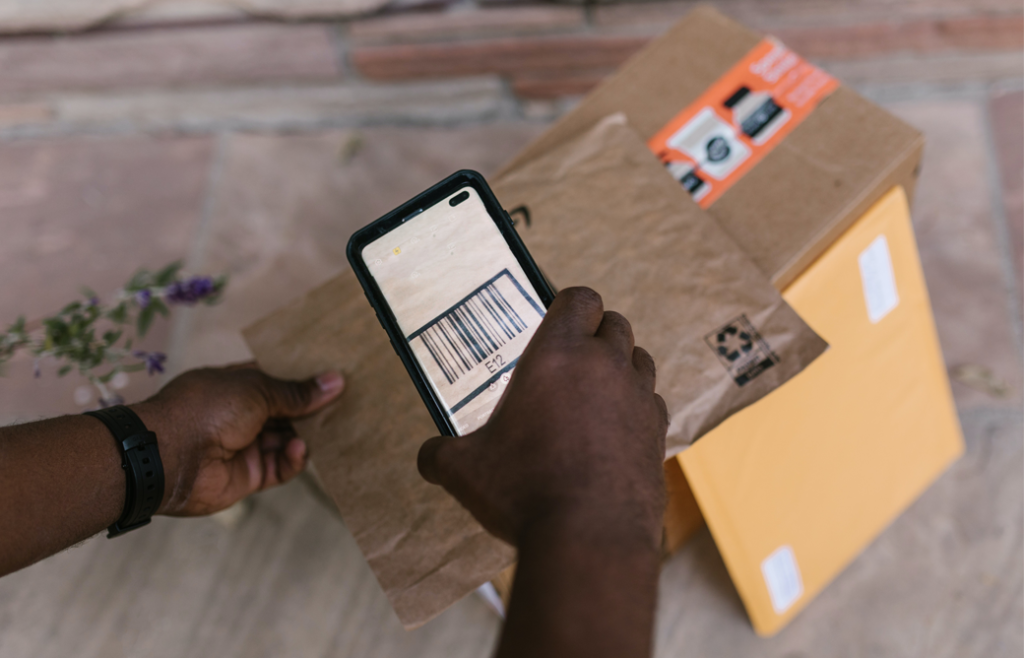
Key Factors for Success in Last-Mile Delivery for Freight Logistics
When it comes to last-mile delivery in the dynamic world of freight logistics, success is not just a matter of chance. It requires a strategic approach and an understanding of the key factors that drive excellence in the freight industry. In this article, we will explore the crucial elements that contribute to successful freight transportation and last-mile delivery. Let’s dive in and uncover the secrets to achieving unparalleled success in this highly competitive field.
1. Optimal Route Planning: Efficiency at its Best
Efficient route planning is the cornerstone of successful last-mile delivery. Utilizing advanced freight logistics software and powerful algorithms, businesses can optimize their delivery routes to minimize travel time and maximize productivity. By considering factors such as traffic patterns, delivery windows, and customer locations, companies can ensure timely and cost-effective deliveries. Optimal route planning sets the stage for efficient operations and customer satisfaction.
2. Real-Time Tracking and Communication: Transparency and Trust
Transparency and trust are vital in the freight industry. Providing customers with real-time tracking updates instills confidence and enhances their overall experience. Implementing robust tracking systems enables customers to monitor the progress of their deliveries and plan accordingly.
Additionally, proactive and clear communication throughout the last-mile journey ensures smooth operations and helps address any unforeseen challenges. By fostering transparency and maintaining open lines of communication, businesses can build trust and loyalty among their customers.
3. Reliable Partner Network: Collaboration for Success
Collaboration with reliable partners is a key factor in achieving last-mile success. Building a strong network of freight transportation providers, local carriers, and technology partners enhances delivery capabilities and expands market reach.
These strategic collaborations allow businesses to tap into specialized expertise, leverage shared resources, and overcome logistical challenges. By fostering strong relationships and nurturing a collaborative ecosystem, companies can achieve seamless last-mile delivery and stay ahead in the competitive landscape.
4. Efficient Inventory Management: The Right Products, at the Right Time
Efficient inventory management is crucial in ensuring timely last-mile delivery. By implementing robust freight logistics systems and employing best practices, businesses can optimize inventory levels, reduce stockouts, and streamline order fulfillment.
Accurate demand forecasting, real-time inventory tracking, and agile replenishment processes contribute to a seamless last-mile experience. The ability to deliver the right products, at the right time, is a key factor in customer satisfaction and business success.
5. Skilled Workforce: The Human Touch
Behind every successful last-mile delivery is a skilled and dedicated workforce. Investing in training and development programs equips employees with the necessary knowledge and expertise to handle diverse delivery scenarios.
From drivers and warehouse personnel to customer service representatives, each team member plays a crucial role in delivering exceptional service. By nurturing a culture of professionalism, efficiency, and customer-centricity, businesses can ensure that the human touch remains an integral part of the last-mile delivery experience.
6. Adaptability to Changing Trends: Embrace Innovation
The freight industry is constantly evolving, driven by technological advancements and changing customer expectations. Businesses must adapt and embrace innovation to stay relevant and competitive. Keeping a pulse on industry trends and emerging technologies allows companies to leverage new opportunities.
From exploring alternative delivery methods, such as drones or autonomous vehicles, to implementing contactless delivery solutions, embracing innovation positions businesses at the forefront of the last-mile revolution.
7. Data-Driven Insights: Unlocking Performance Optimization
Data is a valuable asset in the world of last-mile delivery. Leveraging data-driven insights empowers businesses to make informed decisions and optimize their operations. Analyzing delivery performance metrics, customer feedback, and market trends provides valuable insights for process refinement and improvement. By harnessing the power of data, companies can identify bottlenecks, enhance efficiency, and drive continuous innovation.
Success in last-mile delivery for freight logistics relies on several key factors. Optimal route planning, real-time tracking and communication, a reliable partner network, efficient inventory management, a skilled workforce, adaptability to changing trends, and data-driven insights all contribute to achieving excellence in the freight industry. By prioritizing these factors, businesses can dominate the market and deliver a seamless last-mile experience.
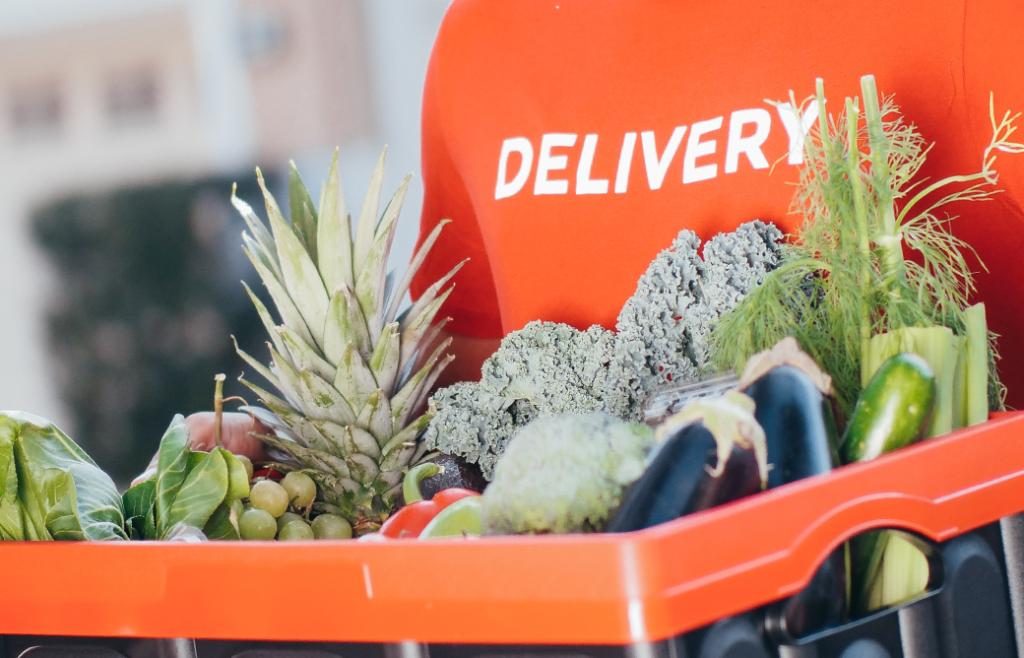
Innovations Driving Last-Mile Efficiency in Freight Logistics
In the ever-evolving landscape of freight logistics, staying ahead of the competition requires embracing cutting-edge technologies and innovative solutions. One area that holds immense potential for transformation is last-mile delivery. By leveraging advancements in technology and process optimization, businesses can unlock unprecedented efficiency in the final leg of the freight transportation journey. In this article, we explore the latest innovations that are driving last-mile efficiency and revolutionizing the freight industry. Let’s delve into the exciting world of last-mile innovations!
1. Autonomous Vehicles: A Road to Efficiency
Autonomous vehicles have emerged as a game-changer in last-mile delivery. With the ability to navigate through traffic, follow optimized routes, and make deliveries with precision, these self-driving vehicles offer significant efficiency gains.
By eliminating the need for human drivers, businesses can reduce costs, enhance safety, and ensure round-the-clock delivery operations. Autonomous vehicles pave the way for a future where last-mile delivery is seamlessly integrated with advanced technologies.
2. Drone Delivery: Taking to the Skies
Unmanned aerial vehicles, commonly known as drones, are transforming the last-mile delivery landscape. With their ability to navigate challenging terrains and bypass traffic congestion, drones offer unparalleled speed and agility. They are particularly advantageous for delivering packages to remote areas or congested urban regions.
By utilizing drones, businesses can reduce delivery times and enhance customer satisfaction. However, regulatory considerations and technological advancements are still ongoing to fully unlock the potential of drone delivery.
3. Delivery Robots: On the Ground, On Time
Delivery robots are making their presence felt in last-mile logistics. These autonomous robots navigate sidewalks and streets, efficiently making deliveries in urban environments.
Equipped with advanced sensors and route optimization algorithms, they can safely maneuver through pedestrian traffic and deliver packages directly to customers’ doorsteps. Delivery robots not only enhance efficiency but also contribute to sustainability efforts by reducing carbon emissions associated with traditional delivery vehicles.
4. Internet of Things (IoT): Connecting the Delivery Ecosystem
The Internet of Things (IoT) is revolutionizing last-mile delivery by creating a connected ecosystem. By integrating sensors, devices, and data analytics, businesses can gain real-time visibility into the entire delivery process. IoT-enabled devices track package location, monitor environmental conditions, and optimize delivery routes.
This connectivity allows for proactive issue resolution, route optimization, and improved overall efficiency. With IoT, businesses can streamline operations and deliver exceptional customer experiences.
5. Artificial Intelligence (AI): Smarter Decision-Making
Artificial Intelligence (AI) is powering intelligent decision-making in last-mile delivery. By analyzing vast amounts of data, AI algorithms can optimize delivery routes, predict demand patterns, and identify potential bottlenecks.
AI-powered systems can also automate customer communication, personalize delivery experiences, and enhance route planning accuracy. By leveraging the power of AI, businesses can make data-driven decisions, improve operational efficiency, and deliver on customer expectations.
6. Blockchain Technology: Securing and Streamlining Operations
Blockchain technology is revolutionizing various industries, and the freight industry is no exception. By leveraging blockchain, businesses can ensure the security and transparency of last-mile operations. Smart contracts recorded on the blockchain streamline payment processes, enable trustless transactions, and simplify supply chain management.
The immutability of blockchain records enhances visibility and traceability, minimizing the risk of fraud and errors. By adopting blockchain, businesses can create a more efficient and trustworthy last-mile ecosystem.
7. Augmented Reality (AR): Enhancing Customer Experience
Augmented Reality (AR) is enhancing the last-mile delivery experience for customers. By integrating AR capabilities into mobile apps or wearable devices, customers can visualize package dimensions, track delivery progress, and even try out virtual product demonstrations. AR technology bridges the gap between online shopping and physical delivery, providing customers with a more immersive and interactive experience. By leveraging AR, businesses can differentiate themselves, increase customer satisfaction, and foster brand loyalty.
These innovative technologies are driving last-mile efficiency and reshaping the freight logistics industry. Autonomous vehicles, drone delivery, delivery robots, IoT, AI, blockchain, and AR are revolutionizing the way goods are delivered to customers’ doorsteps. By embracing these advancements, businesses can optimize operations, improve customer satisfaction, and gain a competitive edge in the ever-evolving world of last-mile delivery.

Overcoming Last-Mile Challenges in Freight Logistics
The last-mile, referring to the final leg of freight transportation from a distribution center to the end destination, is often the most complex and costly part of the supply chain. In this article, we will explore the common challenges faced during last-mile delivery and provide strategies for overcoming them. Let’s dive into the world of last-mile challenges and discover how to conquer them!
1. Addressing Traffic Congestion: Navigating Through Gridlocks
One of the most significant challenges in last-mile delivery is traffic congestion. Urban areas often suffer from heavy traffic, which can lead to delays, increased fuel consumption, and missed delivery windows. To overcome this challenge, businesses can employ innovative route optimization algorithms that consider real-time traffic data. By analyzing alternative routes and selecting the most efficient paths, businesses can minimize the impact of traffic congestion and ensure timely deliveries.
2. Managing Time-Sensitive Deliveries: Meeting Strict Deadlines
Time-sensitive deliveries add another layer of complexity to last-mile logistics. Some goods, such as perishable items or medical supplies, require prompt delivery within specific time frames. To overcome this challenge, businesses can implement dynamic scheduling systems that prioritize time-critical deliveries. By accurately estimating travel times, considering customer preferences, and optimizing route sequencing, businesses can meet strict deadlines and ensure the timely arrival of time-sensitive shipments.
3. Handling Package Theft: Securing Deliveries
Package theft is a growing concern in the last-mile delivery process. Unattended packages left on doorsteps are vulnerable to theft, resulting in dissatisfied customers and additional costs for businesses. To combat this challenge, businesses can explore various solutions, such as partnering with secure pickup locations or implementing smart lockers. These alternative delivery methods ensure secure package storage and provide customers with convenient pickup options, minimizing the risk of theft.
4. Optimizing Delivery Density: Maximizing Efficiency
Delivering packages efficiently in densely populated areas presents a unique challenge. With numerous delivery points in close proximity, optimizing delivery density becomes crucial to reduce travel distances and maximize efficiency. To overcome this challenge, businesses can employ advanced freight logistics software that considers factors such as package size, delivery windows, and customer locations. By optimizing route sequencing and bundling multiple deliveries, businesses can achieve higher delivery density and reduce overall operational costs.
5. Enhancing Customer Communication: Ensuring Transparency
Communication plays a vital role in overcoming last-mile challenges and enhancing customer satisfaction. Providing customers with real-time updates and transparent communication builds trust and reduces uncertainties. To address this challenge, businesses can leverage technology-driven solutions such as automated delivery notifications, SMS alerts, and real-time tracking systems. By keeping customers informed about the status of their deliveries and addressing any concerns promptly, businesses can enhance the overall delivery experience.
6. Adapting to Customer Preferences: Personalizing the Experience
Today’s customers have diverse preferences when it comes to last-mile delivery. Some may prefer flexible delivery time slots, while others may opt for contactless delivery options. Adapting to these preferences is essential for ensuring customer satisfaction. To overcome this challenge, businesses can offer delivery customization options, such as flexible time windows, self-service pickup locations, or delivery to alternate addresses. By personalizing the delivery experience, businesses can cater to individual customer needs and enhance their overall satisfaction.
7. Leveraging Data Analytics: Unlocking Insights for Improvement
Data analytics plays a crucial role in overcoming last-mile challenges and driving continuous improvement. By leveraging data from delivery operations, businesses can gain valuable insights into performance metrics, identify bottlenecks, and make data-driven decisions. Analyzing key performance indicators (KPIs) such as delivery times, first-attempt delivery rates, and customer feedback allows businesses to identify areas for improvement and implement targeted strategies for enhancing last-mile operations.
Customer Satisfaction and Loyalty in Last-Mile Delivery
This final leg of freight transportation represents the moment of truth when customers receive their orders, making it a critical touchpoint for businesses. In this article, we will explore the significance of customer satisfaction and loyalty in last-mile delivery and discuss strategies to enhance these crucial aspects. Let’s delve into the world of satisfied customers and loyal advocates!
1. Delivering On-Time, Every Time: The Power of Reliability
Reliability is a cornerstone of customer satisfaction in last-mile delivery. Customers expect their packages to arrive on time, and any delays can lead to disappointment and frustration. By establishing robust systems and processes, including accurate forecasting, efficient routing, and real-time tracking, businesses can ensure on-time deliveries. Reliability breeds trust, and consistently meeting delivery commitments is a surefire way to satisfy customers and earn their loyalty.
2. Seamless Communication: Keeping Customers in the Loop
Clear and timely communication is vital in building customer satisfaction and loyalty. From order confirmation to delivery updates, businesses should keep customers informed throughout the last-mile journey. Automated notifications, SMS alerts, and delivery status updates provide customers with real-time information, instilling confidence and reducing anxiety. By proactively addressing any potential issues or delays, businesses can maintain open lines of communication and build strong customer relationships.
3. Personalized Delivery Experiences: Catering to Individual Needs
Tailoring the delivery experience to individual customer preferences can make a significant impact on satisfaction and loyalty. Offering flexible delivery options, such as specific time slots, alternate delivery addresses, or contactless delivery, empowers customers to choose what works best for them. By providing personalized experiences, businesses demonstrate their commitment to customer-centricity and create memorable moments that leave a lasting positive impression.
4. Exceptional Service: Going Above and Beyond
Exceeding customer expectations is key to driving satisfaction and loyalty. Going the extra mile in delivering exceptional service can make a significant difference. This includes factors such as friendly and professional delivery personnel, careful handling of packages, and providing additional value-added services, such as assembly or installation assistance. By consistently delivering exceptional experiences, businesses can differentiate themselves from competitors and cultivate loyal brand advocates.
5. Proactive Issue Resolution: Turning Challenges into Opportunities
No delivery process is flawless, and occasional hiccups are inevitable. However, how businesses handle these challenges can make all the difference in customer satisfaction. When issues arise, businesses should take a proactive approach to resolve them swiftly and effectively. Promptly addressing customer concerns, offering appropriate compensation or remedies, and ensuring transparent and efficient resolution processes demonstrate a commitment to customer satisfaction and can turn a negative experience into a positive one.
6. Gathering and Acting on Feedback: Continuous Improvement
Listening to customer feedback is invaluable in driving satisfaction and loyalty. Encouraging customers to share their experiences, whether through surveys, reviews, or social media, provides valuable insights for improvement. Analyzing feedback allows businesses to identify trends, uncover pain points, and make data-driven improvements to their last-mile delivery processes. By actively seeking and acting on customer feedback, businesses show their dedication to continuous improvement and creating exceptional customer experiences.
7. Building Trust Through Transparency: Honesty and Integrity
Transparency is a fundamental pillar of customer satisfaction and loyalty. Being open and honest about delivery timelines, product availability, and any potential issues establishes trust with customers. Businesses should provide clear and accurate information throughout the delivery process, including realistic delivery windows and proactive notifications in case of delays. Transparent practices build credibility, foster trust, and reinforce customer loyalty.
Future Trends and Opportunities in Last-Mile Delivery
As technology advances and customer expectations continue to rise, it’s essential for businesses in the freight industry to stay ahead of the curve. In this article, we’ll explore the future trends and exciting opportunities that lie ahead in the realm of last-mile delivery. Buckle up and get ready to embrace the future!
1. Embracing Automation: The Rise of Delivery Drones and Autonomous Vehicles
One of the most intriguing trends in last-mile delivery is the adoption of automation technologies, including delivery drones and autonomous vehicles. These futuristic innovations have the potential to revolutionize the way goods are transported to customers. Delivery drones can navigate congested urban areas and reach remote locations with speed and efficiency, while autonomous vehicles can optimize routes and eliminate the need for human drivers. Embracing automation opens up new possibilities for faster, more cost-effective, and environmentally-friendly last-mile deliveries.
2. Sustainable Solutions: Green Initiatives and Eco-Friendly Practices
As sustainability becomes a global priority, the freight industry is also embracing eco-friendly practices in last-mile delivery. Electric vehicles, renewable energy sources, and optimized route planning are just a few examples of sustainable solutions gaining traction. Customers are increasingly conscious of their environmental impact, and businesses that prioritize sustainability not only contribute to a greener future but also attract environmentally-conscious consumers. By incorporating sustainable practices into last-mile operations, businesses can stay ahead of the curve and meet the growing demand for eco-friendly freight transportation.
3. Data-Driven Insights: Leveraging Analytics for Optimization
Data has become a valuable asset in the modern era, and last-mile delivery is no exception. The ability to collect, analyze, and derive insights from vast amounts of data opens up opportunities for optimization and enhanced decision-making. Businesses can leverage data analytics to identify patterns, optimize delivery routes, predict demand, and streamline operations. By harnessing the power of data-driven insights, businesses can make smarter, more informed decisions that lead to increased efficiency, improved customer satisfaction, and reduced costs.
4. Enhanced Customer Experience: Personalization and Convenience
In the future of last-mile delivery, customer experience will continue to be a driving force. Customers expect personalized and convenient delivery options that align with their preferences. This includes flexible delivery time slots, real-time tracking, secure delivery lockers, and seamless returns processes. Businesses that prioritize customer-centric experiences and invest in user-friendly technology platforms will differentiate themselves from the competition. By providing convenience and personalization, businesses can forge stronger customer relationships and inspire loyalty.
5. Collaboration and Partnerships: Strengthening the Ecosystem
The future of last-mile delivery will see an increased emphasis on collaboration and partnerships within the freight ecosystem. This includes closer integration between retailers, logistics providers, and technology companies. Collaborative efforts can lead to shared resources, improved infrastructure, and enhanced operational efficiency. By forming strategic alliances and fostering partnerships, businesses can overcome challenges collectively and unlock new opportunities for growth and innovation in the last-mile space.
6. Delivery Experience Innovation: Augmented Reality and Contactless Solutions
Innovations in delivery experience will continue to shape the future of last-mile. Augmented reality (AR) technology can enhance the delivery process by providing customers with interactive experiences, such as virtual product try-ons or step-by-step assembly instructions. Contactless delivery solutions, leveraging technologies like QR codes and IoT-enabled devices, can further enhance safety and convenience. By embracing these innovations, businesses can create memorable and hassle-free delivery experiences that delight customers.
Frequently Asked Questions (FAQs)
What are the objectives of last mile delivery?
The objectives of last mile delivery include ensuring timely and efficient delivery of goods, optimizing the delivery process for cost-effectiveness, improving customer satisfaction through a positive delivery experience, reducing the risk of damage or loss during transportation, and enhancing overall supply chain visibility and control.
How do I ensure last mile delivery?
To ensure successful last mile delivery, it is crucial to focus on key aspects such as route optimization, real-time tracking and visibility, effective communication with customers, reliable logistics partners, efficient warehouse operations, proactive issue resolution, and continuous process improvement. By prioritizing these factors and leveraging technology solutions, businesses can enhance their last mile delivery operations and meet customer expectations.

